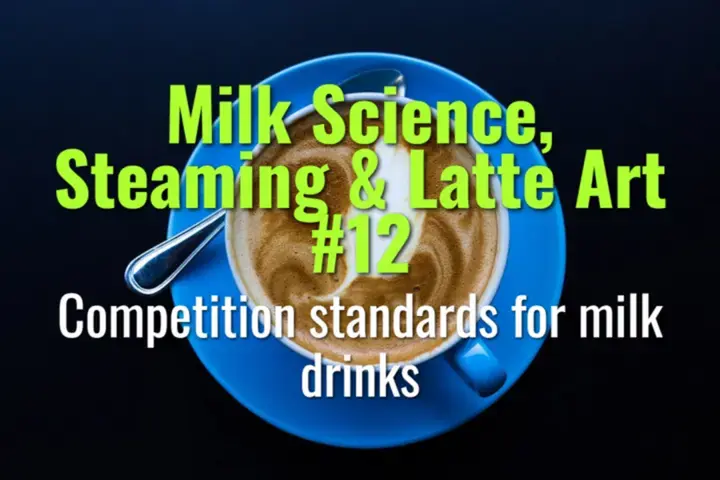Competition standards for milk drinks
The rules and expectations for milk-based espresso drinks in barista competitions, and how they influence café standards.
- Coffee Basics Nerds
- 2 min read
Article 12 of 12 in Milk Science, Steaming & Latte Art/

Competition Context
- Standards set by World Barista Championship (WBC) and similar events.
- Milk drinks are one of three core course categories (espresso, milk, signature beverage).
Milk Drink Definition
- Must be based on one or more shots of espresso combined with steamed milk.
- Typical reference drink: cappuccino (1:1:1 ratio of espresso, milk, foam).
- Texture: glossy, paint-like microfoam, fully integrated with espresso crema.
Evaluation Criteria
- Espresso-Milk Balance: Coffee flavors should remain distinct and harmonize with milk sweetness.
- Temperature: Served warm but not scalding (50–65 °C ideal service temp).
- Texture: Fine, even microfoam with no large bubbles; should coat palate smoothly.
- Visual Presentation: Consistent surface appearance; latte art encouraged but not mandatory.
Latte Art Component
- While not scored as a separate discipline in WBC cappuccino, presentation quality influences judges.
- Symmetry, contrast, and definition valued.
Milk Type
- Traditionally cow’s milk, but competitions increasingly allow alternatives.
- Milk should complement espresso, enhancing flavor clarity.
Practical Implications for Cafés
- Competition standards inspire cafés to adopt higher consistency goals.
- Focus on precise milk temperature, uniform foam, and strong coffee presence.
- Raising expectations improves customer experience.
Summary
In competition, milk drinks are judged on balance, texture, temperature, and presentation. Fine microfoam, harmonious flavor, and visual consistency set the benchmark. These standards influence specialty cafés worldwide, shaping how milk-based drinks are crafted and evaluated.